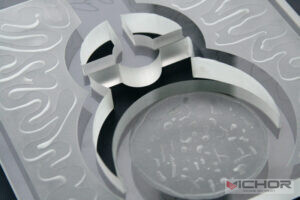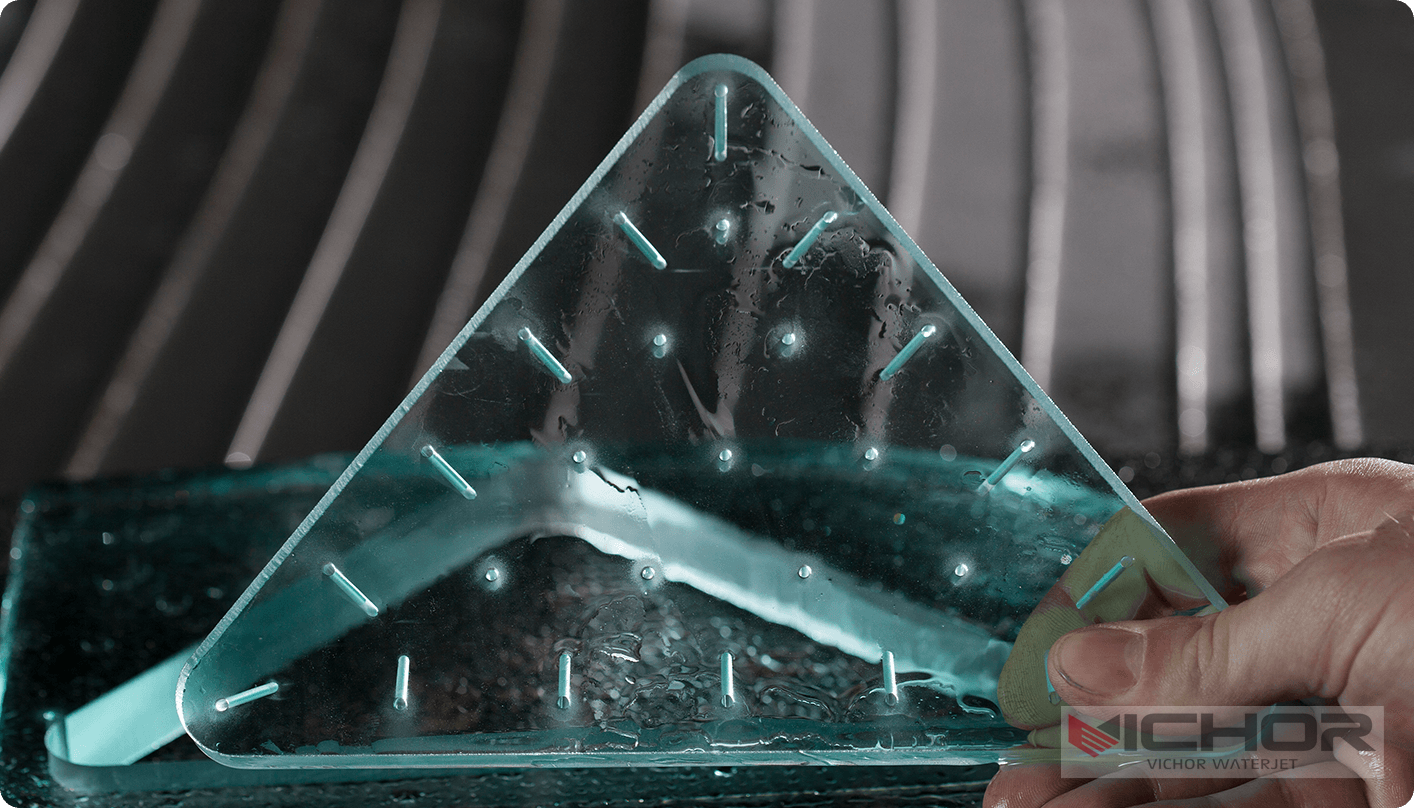
Unlocking Creativity and Precision: Your Guide to the Benchtop Water Jet Cutter
In the world of fabrication and design, the quest for a tool that combines unparalleled precision with remarkable material versatility often leads to a single, powerful solution: the water jet cutter. For decades, this technology was confined to large industrial factories, its size and cost placing it out of reach for smaller workshops, labs, and passionate creators. But innovation never stands still. Enter the benchtop water jet cutter – a compact, accessible, and revolutionary machine that brings the immense power of water jet technology to your desktop. This article delves deep into what a benchtop water jet cutter is, how it can transform your work, and what you need to know before bringing one into your shop, with a special look at the innovative offerings from VICHOR.
What Exactly is a Benchtop Water Jet Cutter?
At its core, a benchtop water jet cutter is a scaled-down, more affordable version of its industrial-sized counterpart. It operates on the same fundamental principle: using a highly pressurized stream of water, often mixed with an abrasive substance like garnet, to cut through materials. The key differentiator is its size and design. Engineered to fit on a workbench or table, this machine democratizes a technology that was once exclusive to heavy industry.
A typical benchtop water jet cutter system consists of a compact cutting table, a high-pressure pump, a motion control system (like stepper or servo motors), and specialized software that translates digital designs into cutting paths. Brands like VICHOR have focused on integrating these components into a user-friendly package, ensuring that even those new to CNC technology can operate it with minimal training. This accessibility opens up a world of possibilities for prototyping, custom part creation, and intricate art production without requiring a massive financial investment or dedicated factory space.
The Science of Cutting: How a Benchtop Water Jet Works
The magic of a water jet cutter lies in its elegant yet powerful process. It’s a fascinating application of physics and engineering.
Pressurization: The process begins with a high-pressure pump. This pump takes ordinary tap water and intensifies its pressure to extreme levels, often between 30,000 to 60,000 PSI (Pounds per Square Inch) or even higher for some models. To put this in perspective, a firehose operates at around 300 PSI.
Stream Formation: This ultra-high-pressure water is then forced through a tiny orifice, typically made from sapphire or diamond. This orifice focuses the water into a coherent, supersonic stream thinner than a human hair.
Abrasive Introduction (For Abrasive Water Jets): For cutting hard materials like metal, stone, or glass, pure water isn’t enough. Immediately after the water jet exits the orifice, it enters a mixing tube where a precise amount of abrasive grit (like garnet) is sucked into the stream via a vacuum effect. The water stream accelerates these abrasive particles, turning the mixture into a potent erosive tool that grinds through the material.
Cutting Motion: The focused stream is mounted on a gantry system that moves it across the X and Y axes over the material sitting on the cutting table. This movement is controlled by computer software (CAD/CAM), which guides the jet to follow the exact contours of the digital design, resulting in incredibly precise cuts.
The entire process is a cold-cutting operation, meaning it generates no heat-affected zone (HAZ). This is a critical advantage over laser or plasma cutters, as it prevents material warping, hardening, or altering the material’s inherent properties.
Why Choose a Benchtop Model? Key Advantages and Applications
The decision to invest in a benchtop water jet cutter is driven by a host of compelling benefits that cater to small businesses, educational institutions, and hobbyists.
Unmatched Material Versatility: This is the crown jewel of water jet technology. A single benchtop water jet cutter can effortlessly cut through metals (aluminum, brass, titanium), stone, glass, ceramics, composites, rubber, foam, plastics, and even food products. It eliminates the need for multiple specialized cutting tools.
Cold Cutting Process: As mentioned, the absence of heat is a game-changer. It allows you to cut heat-sensitive materials like acrylics and certain plastics without melting them and tempered glass without causing it to shatter.
High Precision and Edge Quality: These machines are capable of holding tolerances within thousandths of an inch, producing smooth edges that often require little to no secondary finishing. They can create intricate details and sharp corners that are difficult to achieve with other methods.
Compact Footprint and Accessibility: The most obvious advantage is its size. It fits in spaces where a large industrial machine never could, making it perfect for university labs, jewelry studios, R&D departments, and home workshops.
Ease of Use and Software Integration: Modern benchtop water jet cutter systems from companies like VICHOR are designed with intuitive software. Users can import designs from common CAD programs (like DXF or SVG files) and let the machine handle the rest, making advanced manufacturing accessible to non-experts.
These advantages make the benchtop water jet cutter ideal for applications such as:
Prototyping and model making
Custom jewelry and fashion accessories
Architectural models and inlays
Circuit board prototypes
Custom gaskets and seals
Personalized art and signage
Educational and research projects
Selecting the Right Benchtop Water Jet Cutter: A Buyer’s Checklist
Not all benchtop water jet cutter models are created equal. Here’s what to consider when evaluating your options, including those from a brand like VICHOR:
Cutting Area Size: Determine the maximum size of the parts you plan to produce. Benchtop water jet cutter tables vary, with common sizes ranging from 2′ x 2′ to 4′ x 4′.
Machine Construction and Rigidity: Look for a robust frame made from materials like aluminum or steel. A rigid structure minimizes vibration, which is crucial for achieving high precision cuts.
Pump Pressure and Performance: Higher pressure (e.g., 60,000 PSI vs. 30,000 PSI) generally translates to faster cutting speeds and the ability to handle thicker materials. Inquire about the pump’s horsepower and duty cycle.
Control Software and User Interface: The software is your gateway to the machine. Ensure it is user-friendly, compatible with your design software, and offers features like nesting (arranging parts to minimize material waste) and cut path optimization.
Operating Costs and Maintenance: Factor in the ongoing costs of abrasives, replacement orifices, and mixing tubes. Also, understand the maintenance requirements to keep the machine running smoothly.
Brand Reputation and Support: Choose a manufacturer known for quality and reliability. For instance, VICHOR has built a reputation on providing robust machines backed by strong customer support and comprehensive training resources, which is invaluable for new users.
Navigating Common Challenges and Frequently Asked Questions
Even with a user-friendly benchtop water jet cutter, users often have questions and encounter common issues.
FAQ 1: How loud and messy is a benchtop water jet cutter?
While quieter than many industrial cutters, a benchtop water jet cutter is not silent. The pump generates noise, and the cutting process itself involves the sound of high-pressure water. Most users are fine with standard hearing protection. As for mess, the cutting occurs in a water-filled tank, which contains most of the splash and debris. However, some mist and abrasive dust can escape, so good workshop ventilation is recommended.
FAQ 2: What is the “taper” issue and how is it mitigated?
Due to the physics of the water jet stream, cuts can have a slight V-shape or taper, meaning the top of the cut is slightly wider than the bottom. This is more noticeable in thicker materials. Advanced software on machines like those from VICHOR can compensate for this through “taper compensation,” tilting the head slightly to produce near-vertical edges.
FAQ 3: How slow is the cutting speed compared to a laser?
Water jets are generally slower than lasers when cutting thin materials, especially metals. However, they excel at cutting thicker materials and non-metallics that lasers cannot process without damage. The trade-off for unparalleled versatility and cold-cutting is often speed.
FAQ 4: What are the most common maintenance tasks?
Regular maintenance is key to longevity. Common tasks include:
Replacing the orifice and mixing tube due to wear (every 50-100 cutting hours).
Checking and replacing high-pressure seals.
Cleaning the abrasive delivery system to prevent clogs.
Inspecting and tightening mechanical components.
Filtering and maintaining the water quality in the pump.
FAQ 5: Is a benchtop water jet cutter a good investment for a small business?
Absolutely. For a small business that works with a diverse range of materials and requires high precision without heat damage, a benchtop water jet cutter can quickly pay for itself. It reduces outsourcing costs, speeds up prototyping, and enables the creation of products that would be impossible or prohibitively expensive with other tools. The ROI is achieved through increased capabilities, faster turnaround times, and the ability to take on highly specialized jobs.
The benchtop water jet cutter is more than just a tool; it’s a portal to a new level of creativity and manufacturing capability. It has successfully broken down the barriers to entry for one of the most powerful subtractive manufacturing technologies available today. By offering a compact, affordable, and user-friendly solution, companies like VICHOR are empowering a new generation of makers, engineers, and artists to turn their most ambitious ideas into tangible reality, one precise, cold cut at a time. Whether you’re a seasoned professional or an ambitious beginner, integrating a benchtop water jet cutter into your workflow could be the most transformative decision you make for your craft.
continue reading



